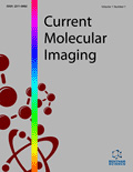Abstract
Head-and-neck squamous cell carcinoma (HNSCC) is a high-risk disease. Historically, treatment often involved mutilating surgery, with devastating implications for quality of life, particularly in patients with advanced-stage laryngeal squamous cell carcinoma (ALSCC). Treatment for ALSCC always included total laryngectomy. Nowadays, treatment with more effective chemoradiotherapy regimes in newly diagnosed patients may often avoid total laryngectomy; however recurrence rates are relatively high. Techniques for early identification of recurrence or residual disease have therefore become crucial. Clinical diagnosis by laryngoscopy is problematic; radiotherapy induced laryngeal edema, which may persist for years, can mask local disease, resulting in detection at a late stage when total laryngectomy is unavoidable.
F18-2-fluoro-2-deoxy-D-glucose (FDG) PET/CT has emerged as an excellent imaging tool in the diagnosis and follow-up of HNSCC patients. In this review, we discuss experience with FDG PET/CT for follow-up of ALSCC after radiotherapy. While there is a high negative predictive value for FDG PET/CT in this situation, as in other HNSCC cases, a high rate of false positive findings in the larynx is described. Increased FDG uptake may be due to ongoing inflammation in the region of persistent edema, and may result in repeated laryngeal biopsies, with potentially deleterious long-term consequences.
FDG PET/CT is an efficient imaging modality for the diagnosis and follow-up of HNSCC patients, but has limitations in the follow-up of ALSCC post-radiotherapy—benefits and risks must be weighed with caution.
Keywords: Advanced laryngeal carcinoma, FDG PET/CT, post-radiotherapy edema.
 3
3

